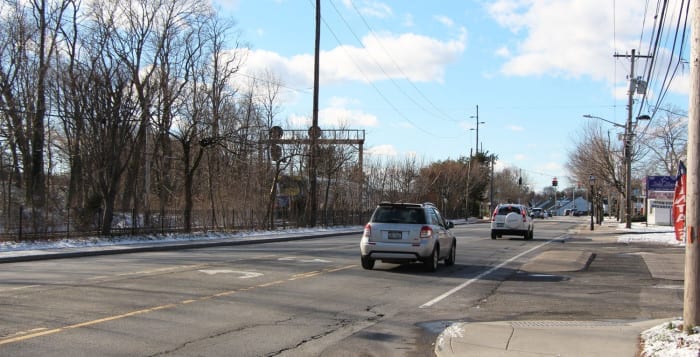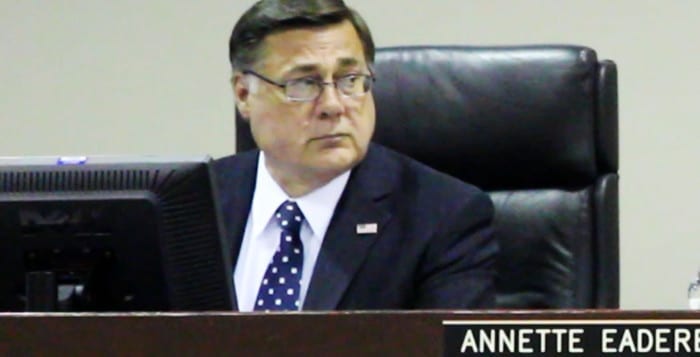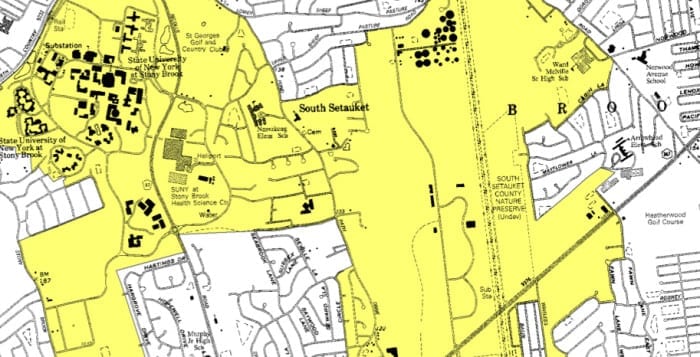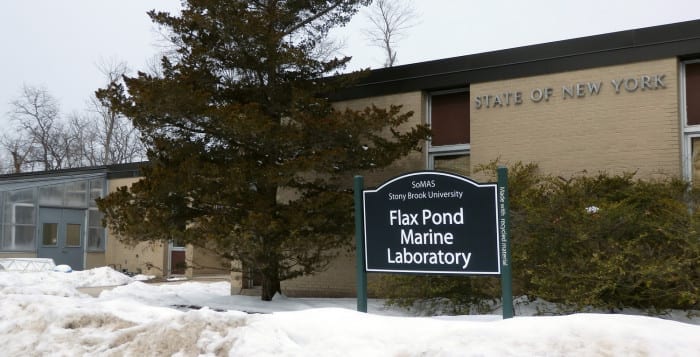A North Shore-based group has answered the county’s calls to revitalize the site of a former landfill in Kings Park.
The Suffolk County Landbank Corp., which is a not-for-profit entity that works with the county to redevelop tax-delinquent properties, put out a request for proposals to completely rejuvenate eight brownfield spots across Suffolk, including the former Steck-Philbin Landfill on Old Northport Road in Kings Park. This week, Stony Brook’s Ecological Engineering of Long Island answered with a proposal to build Long Island’s first community-owned solar farm.
Suffolk County Executive Steve Bellone (D) said the county wanted to team up with the private sector to revitalize the various brownfield sites and described them as blights on their respective communities. Shawn Nuzzo, president of Ecological Engineering of Long Island, said his group’s plan had the potential to pump renewable energy into the Island’s power grid almost immediately.
In a statement, Nuzzo described the 6-megawatt solar farm proposal as the largest landfill-to-solar project in New York state that could generate nearly 8 million kilowatt hours of solar electricity in its first year.
“Unlike other recent utility solar projects on Long Island – where large developers have proposed to clear-cut forests, raze golf courses and blanket farmable lands – our proposal takes a dangerous, long-blighted and otherwise useless parcel and revives it as a community-owned solar farm,” Nuzzo said. “The Kings Park Community Solar Farm will be a quiet, low-intensity land use generating nearly no automobile traffic after installation. As equally important, we will return proper ecosystem services to the site through the ecological restoration technique of phytoremediation — using native, low-light, low-lying and drought tolerant plants known for their long-term soil restorative properties.”
Related: Former landfill in Kings Park to be repurposed
A property is classified as a brownfield if there are complications in expansion or redevelopment based on the possible presence of pollutants or hazardous materials, according to the United States Environmental Protection Agency.
The site on Old Northport Road is still owned by Richard and Roslyn Steck, according to the Suffolk County Landbank Corporation Request for Proposals, though penalties and interest bring the total owed in property tax on the roughly 25 acres of land to nearly $1.5 million. The property has been tax delinquent since the Richard Steck, Gerald Philbin Development Co. was found to be using the site to dispose of waste that it did not have a permit for in 1986. It is located less than a half mile east of the Sunken Meadow Parkway and about a half mile west of Indian Head Road.
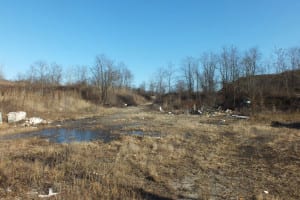
The property is next to the future location of a multisport complex being developed by Prospect Sports Partners LLC. The $33 million plan for the 44-acre site was approved in July 2015.
“This has been a long time coming and creating policies and procedures for the Landbank has been an arduous task, but I’m beginning to see a light at the end of the tunnel,” Suffolk County Legislator Tom Cilmi (R-Bay Shore) said earlier this year when the county sought private sector support to revitalize the site. Cilmi is a member of the board of the Landbank. “Hopefully, soon we’ll see the remediation of this and other properties, which benefits our environment. We’ll put the properties back on the tax rolls, which means millions of dollars of savings for taxpayers.”
Nuzzo said Ecological Engineering of Long Island would finance, build and operate the solar farm through a crowdfunding campaign seeking small investments from everyday Suffolk County residents. The plan, he said, would be to sell 25,000 “solar shares” in the farm at $500 a piece.
“We calculate that the Kings Park Community Solar Farm will generate more than $24 million in gross revenue over a typical 20-year power purchase agreement. We will offer our investors a guaranteed 150 percent return on investment with annual payments deposited over the 20-year lifetime of the agreement,” he said. “Through design efficiencies we will maximize photovoltaic energy output to not only increase profit for our investors but also to decrease our reliance on fossil fuels, which today — despite many residential and commercial PV installs — still represents the majority of Long Island’s energy production.”
The plan has already received support from various North Shore elected officials, including state Assemblyman Steve Englebright (D-Setauket), who threw support behind Nuzzo in a letter to the Suffolk County Landbank Corp.
“I am always happy to see younger members of our community active in civics, so it was especially heartening to this vibrant young man at the helm of my local civic association,” he said. “Mr. Nuzzo has also worked with the Setauket Harbor Task Force and was responsible for securing the donation of the use of a ‘solar trailer’ from a local solar installer to power our Setauket Harbor Day Festival last September with renewable solar energy.”
Brookhaven Town Councilwoman Valerie Cartright (D-Port Jefferson Station) described Nuzzo as a “knowledgeable leader on environmental issues” who was “well versed in many modern environmental technologies and practices, including solar projects, LEED process and green technology.”
The Suffolk County Landbank was established in 2013 after its application was approved by the New York State Empire State Development Corporation. Some of the other brownfields included in the request for proposals include Hubbard Power and Light and a gas station on Brentwood Road in Bay Shore, Lawrence Junkyard in Islip and Liberty Industrial Finishing in Brentwood, among others. Cumulatively, the eight properties owe more than $11 million in delinquent taxes as of August 2015.


